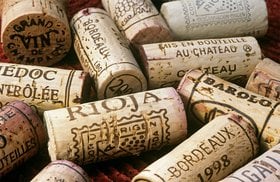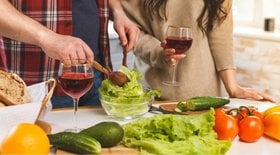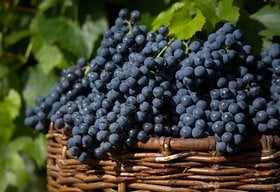Chablis Wine: Winemaking, Best Wines, Prices (2025)
Want to know more about Chablis and the best wines from this wine region?
Chablis (pronounced “Shah-Blee”) is a historic wine region located near Côte d'Or in France. The delicious dry white wine made in Chablis is known for its crisp acidity and minerality and is hailed as one of the most distinctive Chardonnays in the world!
But what makes Chablis so special? What are the differences between the Chablis appellations? What does the wine taste like, and which are the best ones to buy?
Let’s explore everything about Chablis, starting with the history of the wine region, it’s appellations, winemaking techniques, and more.
To get you sipping on your own glass of Chablis, we’ve also suggested eight of the best Chablis wines to invest in 2024, and how to invest in them!
Further reading
- Get all your wine investing queries answered in this Ultimate Wine Investing Guide!
- If you're a fan of Italian wines, you'll definitely want to try these Rich Moscato d'Asti Wines.
A Brief History Of the Chablis Wine Region
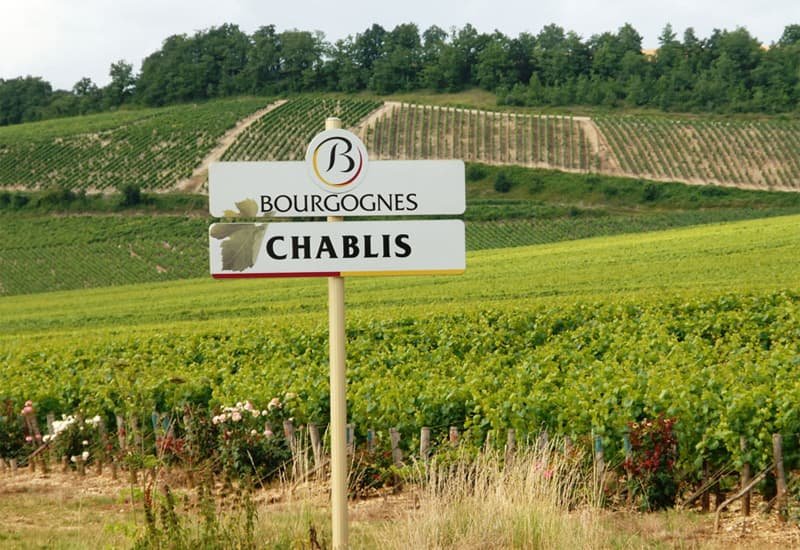
The history of Chablis started in the Middle Ages with the Cisterian Monks.
Chardonnay was planted in Chablis in the 12th century, and from there, it spread south into the Burgundy region.
The region had easy access to the Yonne river, which allowed Chablis producers to transport wine to Paris and capitalize on the market there.
By the 19th century, there were 40,000 hectares of Chablis vines, and some Champagne producers started using Chablis as a basis for their sparkling Cuvee.
Later, Chablis growers faced several issues, including vineyards being affected by oidium and phylloxera. By the 1950s, only 500 hectares of the old vines survived.
During the 20th century, winemakers brought about many technological advances and had a renewed commitment to quality production.
The Institut National des Appellations d'Origine created the Appellation d'origine contrôlée (AOC) region for Chablis in 1938. The AOC establishment was put in place to protect the name “Chablis” as it was being used by many other non-Chablis wines.
Also read:
- Here’s an insightful article on the top Champagne to invest in 2024. Remember to serve it in the right Champagne glass!
- Meanwhile, serve yourself a vibrant Mimosa or a fruit-filled Sangria!
Let’s take a closer look at the Chablis appellations and their differences.
Chablis Hierarchy Of Appellations

Just like all the other regions of Bourgogne, Chablis has a hierarchy of appellations. These appellations are marked on every wine label.
Here are the four appellations of Chablis:
- Petit Chablis: In 1944, the Petit Chablis appellation was created to cover the lesse-rated climates (vineyard sites). These vineyards are located in plateau above the premier cru and grand cru sites, and do not benefit from the same climatic and geological advantages that the other appellations enjoy.
- Chablis: The Chablis appellation was created in 1938 and is the most prolific and the biggest of the four appellations.To be a “real Chablis” the wine needs to be a dry white wine produced in a specific area near the Chablis town. These wines also need to be 100% Chardonnay.
Chablis Premier Cru: The Chablis Premier Cru appellation is more of a subdivision of the Chablis appellation. 40 vineyard sites are deemed worthy of the Premier Cru appellation. These Premier Cru vineyards are then split into 80 smaller vineyards.
Some popular Premier Cru Chablis climats include Fourchaume, Vau de Vey, Côte de Léchet, Vaillons, Montmains, and Mont de Milieu.
Premier Cru wines are produced according to quality control standards and are lower in quality when compared to Chablis Grand Cru appellations.
- Chablis Grand Cru: This appellation produces the highest-quality Chardonnay in Chablis. Wines that have the Chablis Grand Cru appellation label are produced in vineyards that span an area of 100 hectares. Chablis Grand Crus are made under strict regulations and respond well to long-term bottling.
There are seven Chablis Grand Cru vineyards along the Serein river - Blanchot, Bougros, Grenouilles, Les Clos, Vaudesir, Valmur, and Les Preuses.
Also read: Here’s a useful guide to the Best Malbec Wine to Buy in 2024.
Also check out the best Barbera wines, the most delightful Châteauneuf du Pape bottles, and exciting Zinfandels.
Viticulture in Chablis
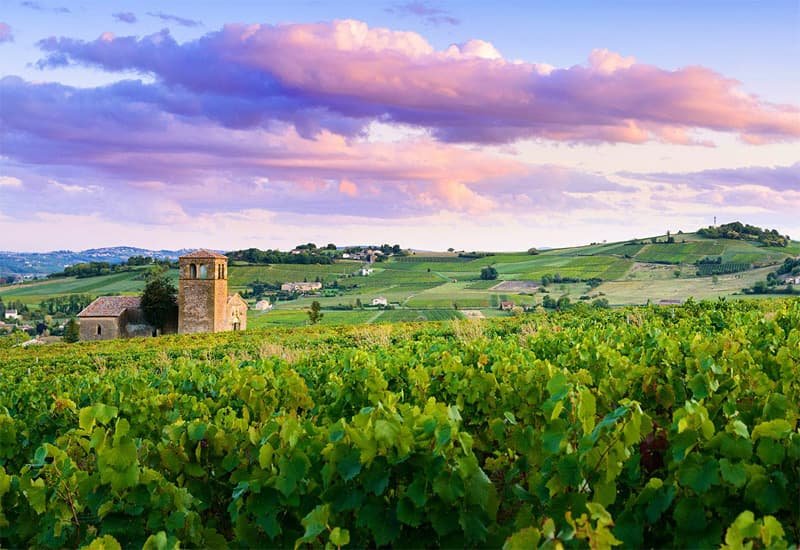
A severe problem that any Chablis grower faces is frost. For example, the 1957 vintage was affected so badly that only 132 bottles of Chablis wine were produced.
To protect the vines from frost, the practice of using smudge pots and aspersion irrigation were introduced during the 1960s. Smudge pots provide direct heat to the vine, while aspersion irrigation involves spraying the vine with water.
When it comes to harvesting the Chardonnay grapes, cru vineyard managers need to follow AOC regulations for the minimum alcohol levels, and they are:
- AOC Chablis vineyards: 9.5% ABV
- Premier Cru vineyard: 10.5% ABV
- Grand Cru vineyard: 11% ABV
80% of the vineyards in the Chablis region use mechanical harvesting. However, Grand Cru producers handpick the grapes to make sure the Chardonnay grape is fully ripened.
Read more: Don’t miss trying out these sensuous Rose wines handpicked from around the world.
What is the Terroir in Chablis Like?
The effect that terroir has on wine can be clearly seen in Chablis, more than any other wine!
The Chardonnay varietal gets its characteristics from a subsoil that dates back to the Jurassic age (over 150 million years old)!
Chablis is grown in two types of soil:
- The Grand Cru and Premier Crus have Kimmeridgian soil. This soil is rich in mineral-rich clay. It contains marine fossils that are responsible for the lime content. This limestone soil is the reason for the trademark minerality in these crus.
- The Petit Chablis appellation has Portlandian soils. Portlandian soils are different from Kimmeridgian soil. They have a lesser concentration of lime and clay, which results in a fruitier wine and a lesser minerality.
Now, the characteristics of Chablis owe its origins as much from the wine vinification process as from it’s terroir. Let’s see how that goes.
Also read: For the best white wines check out these delicious Sauvignon Blancs and elegant Rieslings.
Chablis Winemaking Techniques
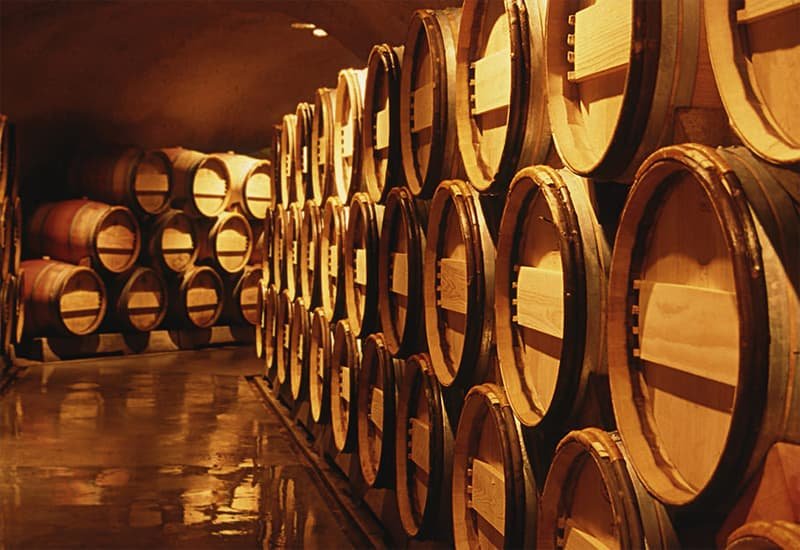
The 20th century saw many advances in Chablis winemaking.
In particular, Chablis producers introduced temperature-controlled fermentation and malolactic fermentation. Malolactic fermentation is what reduces the acidity of the wine and stabilizes it.
The wine is ready for aging once the grapes have been fermented and malolactic fermentation is done.
In the beginning, old wooden barrels were used to age Chablis. This practice comes from when empty Chablis barrels were returned from Paris to be refilled.
Today, depending on the harvest quality, wine producers might use stainless steel vats or oak barrels to age Chablis wine, although the latter is rare.
Premier and Grand Cru producers sometimes seek out oak, while Chablis and Petit Chablis are rarely oaked (unlike other Chardonnay wines.)
In fact, the popularity of Chablis is what made the “unoaked Chardonnay” style of wines so popular worldwide!
Read more: The best Italian wines?Chianti wine is a excellent choice!
So, what can you expect in terms of flavor from a bottle of Chablis wine?
The Taste And Characteristics Of Chablis

Even though Chablis is 100% Chardonnay, it rarely displays buttery flavors, which Chardonnay gets from the oak aging.
Chablis wines typically have aromas of citrus and white flower fruit, and flavors of pear, citrus, minerality, and salinity.
It is drier and fresher compared to the other whites produced in Burgundy.
A good bottle of Chablis wine leaves you with a long, tingly finish with high acidity and a flint-like minerality.
And, how do you serve Chablis wine?
Chablis wines are best served at 42-50 oF (5-10 oC) and can be stored for up to six years in the right conditions. Some top tier Chablis wines can age for 10 years or more.
Popular Chablis Food Pairings

The high acidity and salinity in Chablis wine makes it an excellent pairing for raw fish, sushi, and lighter meats.
If you’re looking for spices to add to a dish that’ll be paired with Chablis, go for fresh herbs, white pepper, and a light spice profile.
Does Chablis sound like the perfect white wine to serve at your next dinner party?
We did some research for you and found 8 of the best Chablis wines you can buy this year - for drinking, gifting, and for investing.
Best Chablis Wines You Can Buy In 2024 (Including Taste, Prices)
1. 1989 Rene et Vincent Dauvissat-Camus Les Clos
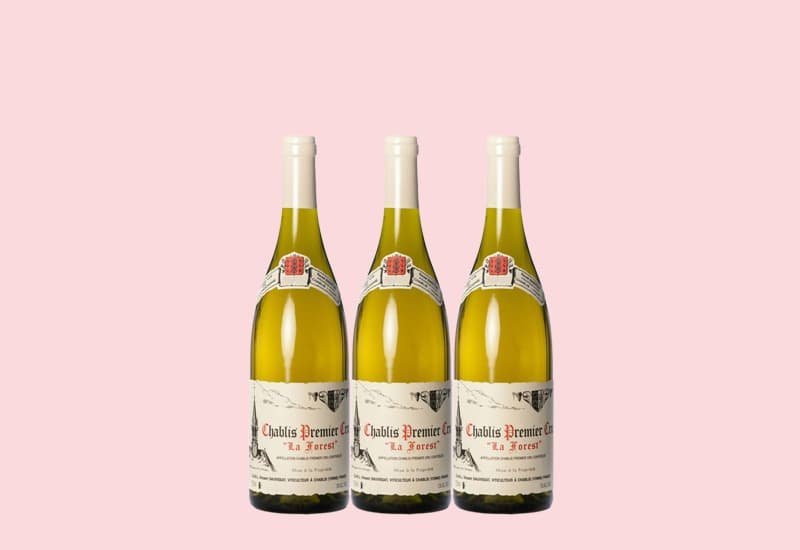
Not only does this Grand Cru wine come in a gorgeous bottle, but the contents will blow your mind!
It has a brilliant, deep yellow center and clear rims. On the nose, there are notes of almond paste, citrus, honey, pear, and white stone. On the palate, you’ll experience a riveting acidity and fantastic length.
Price of 1989 Rene et Vincent Dauvissat-Camus Les Clos: $1250
2. 2014 Domaine Francois Raveneau Les Clos

Les Clos is one of the Grand Cru vineyard sites of Domaine Raveneau - a sought-after seal of Chablis. Les Clos is the largest and one of the best climats of Chablis producing complex and age-worth Chardonnay wines.
This 2014 Chablis Grand Cru has notes of floral, mineral reduction, and oyster shell.
It has concentrated and refined flavors, and it oozes fine minerality on the palate. You’ll love the long and chiseled finish as well!
Price of 2014 Domaine Francois Raveneau Les Clos: $1149
3. 2017 Domaine Francois Raveneau Les Clos
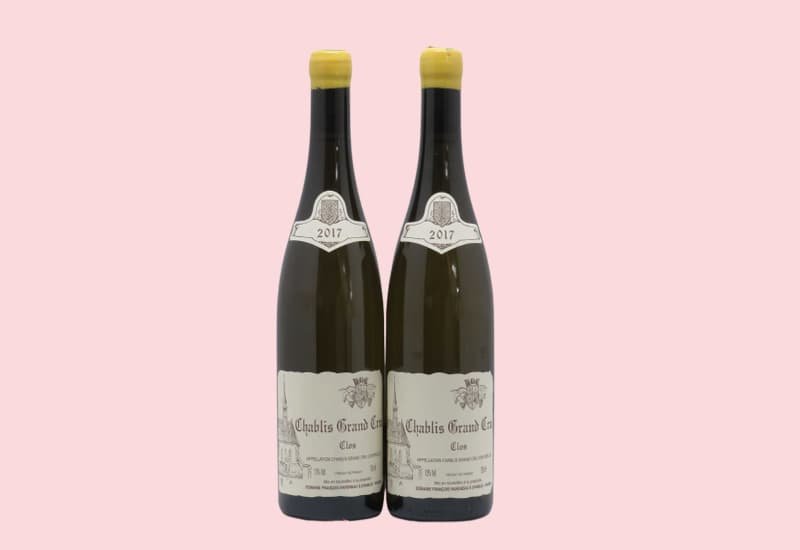
This Chablis white wine is an excellent introduction to Reaveneau’s Chablis Village.
It has aromas of white peach, green apples, oyster shells, white flower fruit, and almond paste. It is a medium to full-bodied white wine that has a good depth and is backed with acidity. It also has a long but delicate wood-inflected finish.
Price of 2017 Domaine Francois Raveneau Les Clos: $985
4. 2010 Domaine Francois Raveneau Valmur
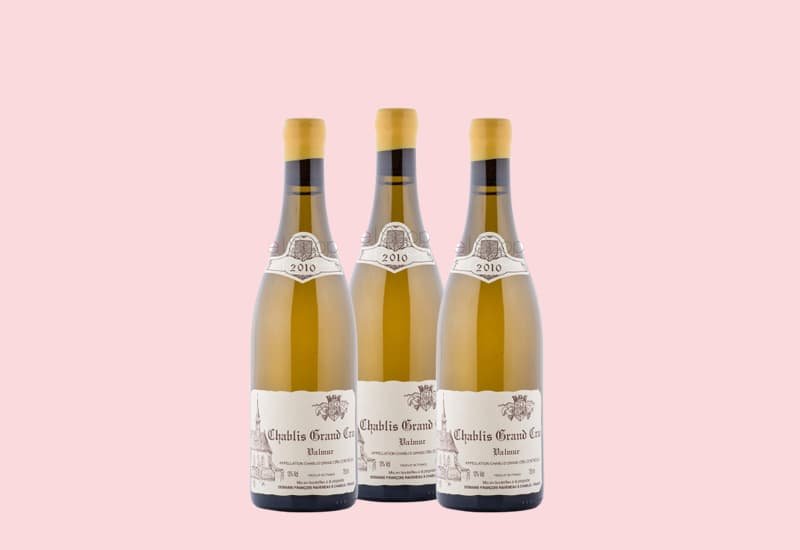
The Valmur Grand Cru vineyard stretches across a valley at the heart of the appellation. Due to the subtle variations of altitude and slopes, a wider range of wine styles are made here than in the other vineyards.
The 2010 Chablis Valmur is an intense, rich, heady wine and has enough acidity to balance the flavors.
It has hints of crushed rocks, peaches, apricots, and slate, which blend beautifully and develop into a long and dramatic finish.
Price of 2010 Domaine Francois Raveneau Valmur: $960
5. 2004 Domaine Francois Raveneau Montee de Tonnerre

The Montée de Tonnerre Climat lies next to Chablis and covers a 42-hectare area, including Chapelot, Côte de Bréchain and Pied d'Aloup.
The 2004 Domaine Francois Raveneau Montee de Tonnerre has a pale lemon yellow color. This white wine has aromas of chalky limestone, green banana, mint, and vinyl.
This Premier Cru wine has a fresh acidity, and flavors of fresh nuts, lemons, butter, and minerals that develop into a balanced and refined finish.
Price of 2004 Domaine Francois Raveneau Montee de Tonnerre: $657
6. 1995 Domaine Francois Raveneau Montee de Tonnerre

With fresh aromas of oyster shells and seawater, this Premier Cru wine is perfect for a hot sunny day.
It presents crisp and light flavors of lime and citrus on the palate, with notes of chalk and minerals in the background. The 1995 vintage has a subtle complexity on the finish with notes of limestone.
Price of 1995 Domaine Francois Raveneau Montee de Tonnerre: $531
7. 1988 Domaine Francois Raveneau Chapelot

Even though Chapelot has its own Premier Cru appellation, the grapes from here are usually blended to give Montee de Tonnerre wines bolder characteristics.
The bottles produced at Domaine Francois Raveneau are rare and only come from renowned vineyard plots.
This mature Chablis Premier Cru has very little minerality left but still has strong aromas of white Acacia flowers.
Price of 1988 Domaine Francois Raveneau Chapelot: $514
8. 2017 Domaine Francois Raveneau Blanchot

Blanchot is the southernmost of the seven climats of the Chablis Grand Cru. It’s usually the last to be harvested, and produces delicate wines with accentuated minerality.
This 2017 Grand Cru vintage has compelling aromas of melted beeswax, pressed flowers, mineral, and smoke.
The palate is perfectly balanced with notes of spice, is taut, and crisp on the entry developing into flavors of nutmeg, orange rind, and walnut.
Price of 2017 Domaine Francois Raveneau Blanchot: $484
Does Chablis Wine Age Well?
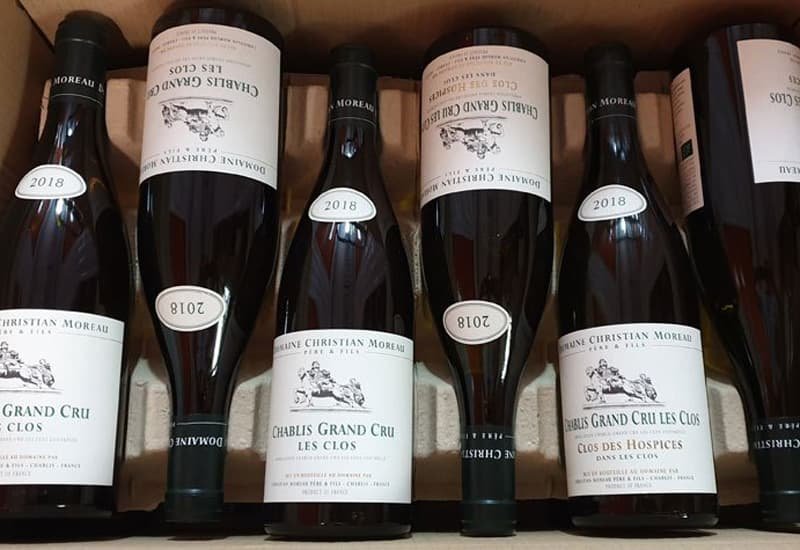
The bottle age of Chablis differs among the appellations.
- Petit Chablis wine can be enjoyed in its youth for up to two years.
- Chablis AOC, also to be enjoyed in its youth, can be stored for up to five years.
- Chablis Premier Cru is a true delight after being aged for five to 10 years.
- Chablis Grand Cru can be aged for 15 to 20 years and sometimes longer.
So, if you’re looking to invest in Chablis wine for the long term, the producers that you should look for are:
- Domaine Raveneau
- Domaine Laroche
- Benoit Droin
- Domaine William Fèvre
- Domaine Louis Michel et Fils
- Domaine Christian Moreau
- La Chablisienne
Ready to add this delectable French white wine to your collection?
You could spend time hunting in wine stores that sell Chablis, or shop from online portals or take a chance at wine auctions.
Easier way out?
You could sign up with an expertwine investment company like Vinovestand get a team of sommeliers to help build your wine portfolio (including Chablis) - from the comfort of your home. All while you sip your Kir Royaleor any Champagne cocktail!
Buy And Store Your Chablis Through Vinovest
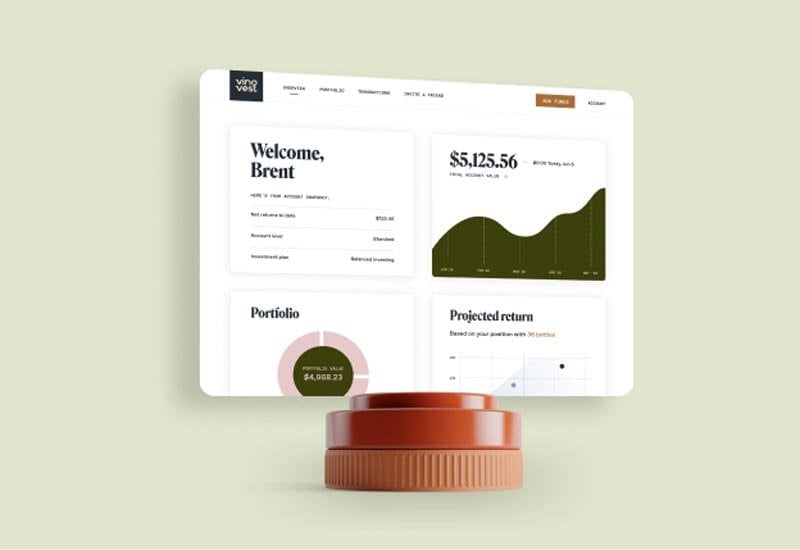
Vinovest is a world-class online wine investment company that helps you invest in the finest and rarest wines from around the globe.
You can have your wine authenticated, stored, and sold to buyers as you watch your wine investment portfolio grow!
How It Works
You can have access to all the Sauternes, Côte de Beaune, or Chablis wine you need in four simple steps:
- Sign up
- Complete the brief questionnaire on your risk appetite and investment preferences.
- Top up your account with a minimum of $1,000 to your account.
- Track your fine wine portfolio online and watch it grow!
8 Benefits of Wine Investing through Vinovest
Here’s why Vinovest is your best bet when it comes to investing in wine:
1. Easy Buying, Selling, And Delivery
You can browse, buy, and sell wines from all over the world using intelligent AI-driven technology from Vinovest - from the comfort of your home.
What’s even better? Vinovest will deliver your Screaming Eagle, Tempranillo or any other wine to your home if you want to drink it, or to your buyer once you sell it.
2. Best Prices and a Global Network
Vinovest buys wines from winemakers, merchants, and wine exchanges at wholesale
prices. This means you can even get a bottle of Chablis, or a sensational sweet red wine, or any other bottle that you want, directly from the village it was produced in - without going through middlemen!
3. Provenance And Authenticity
Don’t be worried about whether or not the Lambrusco or Ice Wine you are buying is authentic. Vinovest does all the hard work of tracking down the wine’s origin to make sure your purchase is 100% genuine.
4. High-Performing Portfolio
Vinovest lets you access a team of world-class wine experts to help you build your wine collection. Sommeliers and data scientists use a world-class financial model to help build your wine portfolio.
5. Insurance Coverage
When you use Vinovest for all your wine investment needs, every bottle bought or sold is
covered under insurance for breakage or loss.
6. Ownership
You own every wine bottle in your portfolio. That's right - every bottle of Cabernet Sauvignon, Pinot Noir, and Chardonnay wine is yours!
7. Optimal Storage
Your Chablis wine, sweet white wine, and other bottles need to be stored in the best conditions to help it age well. Vinovest keeps your wine in climate-controlled bonded warehouses that are close to some of the best wine regions in the world.
8. Low Overall Costs
Vinovest charges an annual fee of 2.85% that covers authentication, storage, insurance, management of your portfolio, buying, and selling your wine. (Enjoy a reduced fee of 2.5% if your portfolio goes above $50,000.)
The "Purest" Expression Of Chardonnay

If a prestigious white wine with bright acidity and citrus flavors is your thing, then a great Chablis wine is just what you need now!
Although all Chablis wines aren’t age-worthy, you can invest in a Chablis Grand Cru or an exceptional vintage from Domaine Raveneau or Domaine William Fèvre for the long haul.
The best way to buy this fantastic white wine from France is to use Vinovest’s investment platform.
Let Vinovest take care of the finer details while you sit back and watch your wine investments grow! Sign up today to start building an outstanding wine portfolio.

